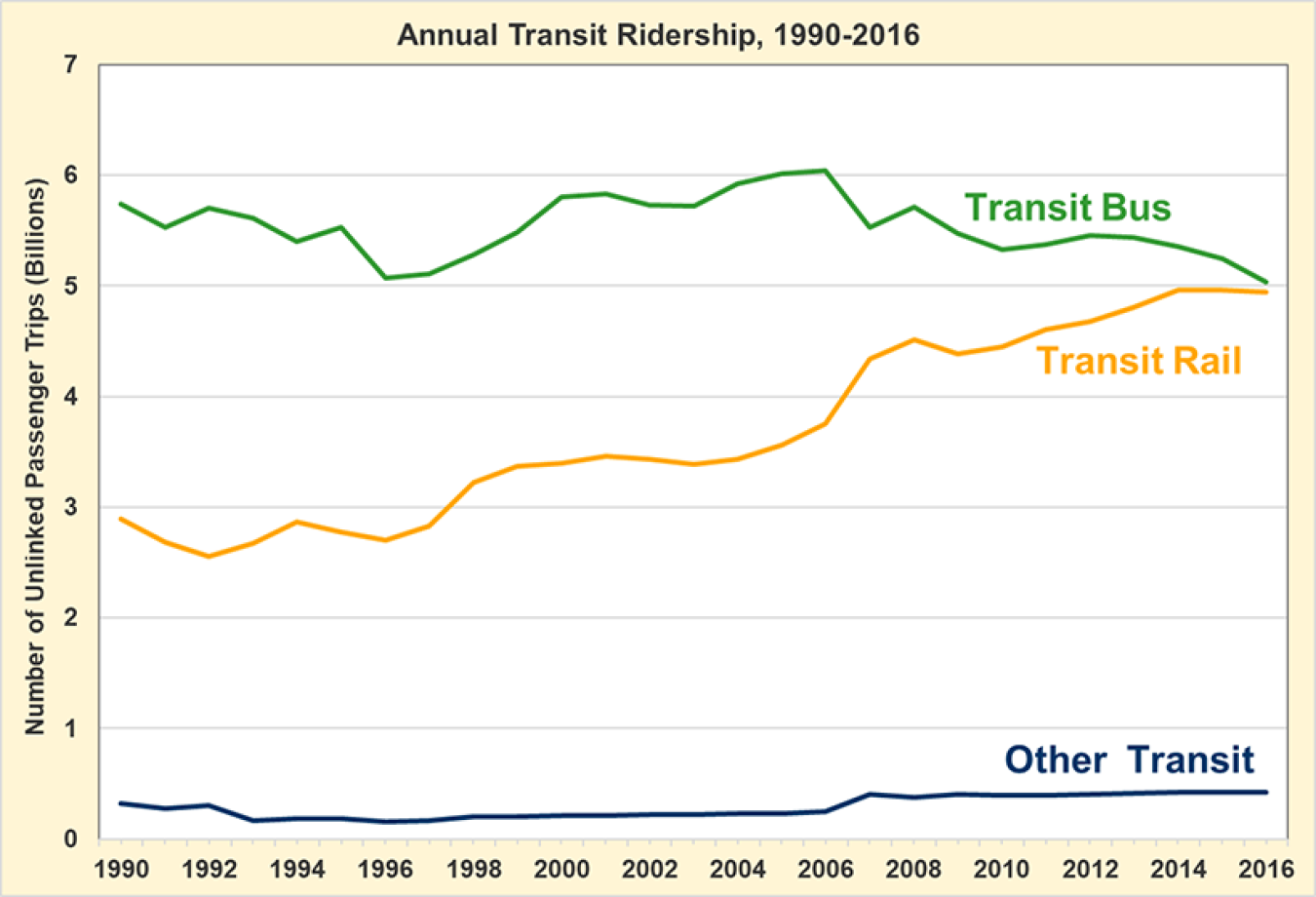Transit rail, which includes heavy rail, light rail, and commuter rail, has experienced increasing ridership over the past six years.
December 25, 2017Historically, transit bus ridership in the United States has been higher than transit rail ridership, but that may be changing. Transit rail, which includes heavy rail, light rail, and commuter rail, has experienced increasing ridership over the past six years, while transit bus ridership was mainly decreasing. In 2016, transit rail ridership was just under five billion trips and transit bus ridership was just over five billion trips. The number of rail transit systems operating in 2016 was roughly double that of 1990, accounting for some of the increase. However, transit bus ridership and transit rail ridership are both affected by factors such as the economy, gasoline prices, and more recently, ridesharing services.
Annual Transit Ridership, 1990-2016

Notes: Transit bus includes trolleybus. Transit rail includes heavy rail, light rail, and commuter rail. Other transit includes demand response, vanpool, automated guideway, cable car, inclined plane, ferry boat, and monorail.
Source: American Public Transportation Association, Public Transportation Ridership Report, Quarterly and Annual Totals by Mode, accessed November 14, 2017.

